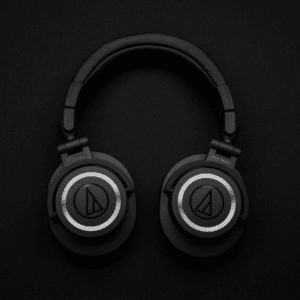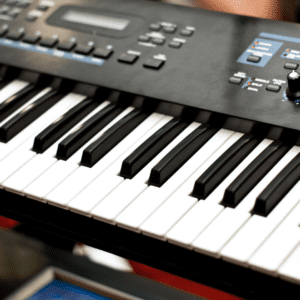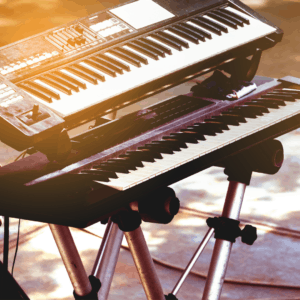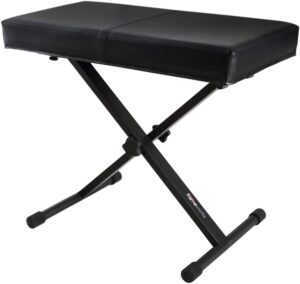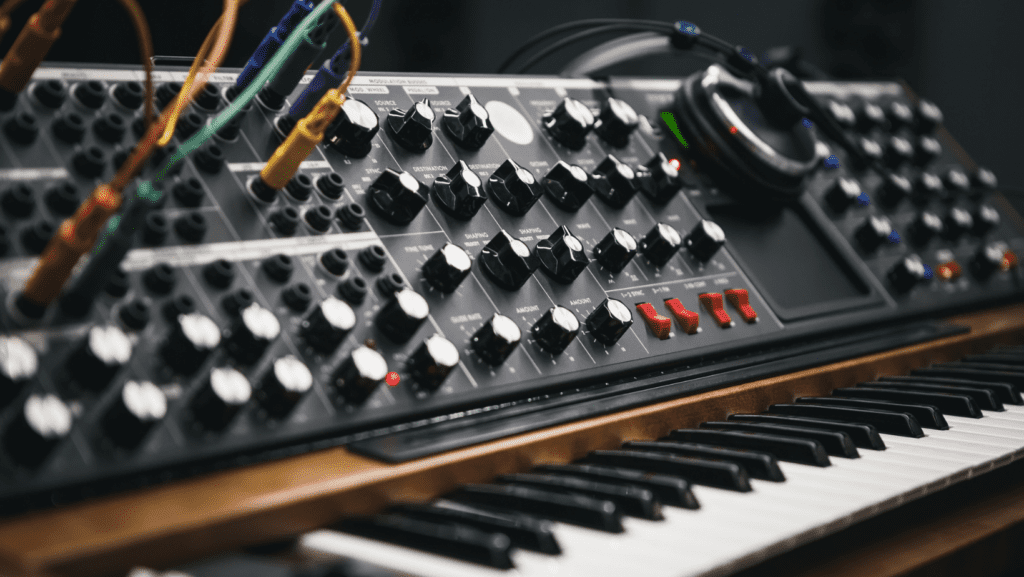
If you want to expand your sound palette while maintaining a keyboard-like design, analog synthesizers can be the next step in your creative journey. Analog synths give a tactile and gratifying experience by combining a hands-on approach to synthesis with easy tweakability and outstanding tones. Choosing the best analog synthesizer, whether it’s a battery-powered instrument, a module, or a keyboard, is a challenging but exciting task.
Here are the 4 best analog synthesizers under 1000$
| 1.Best Polyphonic analog synth – Korg Minilogue The Minilogue is Korg’s portable polyphonic synth with analogue architecture, with a sleek and minimal-looking keyboard. | Buy on Amazon | |
| | 2.Best Monophonic Analog Synth – Novation Bass Station II This Novation analog Synth is a brand new version of the classic Novation bass Station with a brand new “acid” filter joining the “classic” original bass station filter. | Buy on Amazon |
| | 3. Best Analog Synth With Built-in Speaker – Roland JD-XI Small, powerful, and inexpensive compact synth with onboard pattern sequencer and vocal FX | Buy on Amazon |
| | 4.Best Paraphonic Analog Synth – Moog Subsequent 25 A 25-key analog synthesizer with two oscillators and a simple design. | Buy on Amazon |
Best Analogue Synth Under 1000$
Best Polyphonic analog synth: Korg Minilogue
Korg’s portable polyphonic synth with analogue architecture, the Minilogue, is sleek and simple in appearance. This Analog Synthesizer is a versatile, powerful four-voice analog synthesizer with an 8 Watt power usage.
Fully programmable, with 200 program memory (100 sounds included) and a voice Mode that allows you to customize the four voices in a variety of ways.
It includes an automated 16-step polyphonic note and motion sequencer, as well as an oscilloscope that visualizes the waveform and a range of voice settings for adjusting polyphony. The OLED display can also be used to keep track of various settings and characteristics. Furthermore, each wave has a constantly changing (and modulatable) shape, giving the Minilogue an incredibly powerful and adaptable sonic toolkit.
VMD dials in inversions of the chord you’re playing, allowing for four-voice chords (great for instantly spicing up chord sequences). Duo Mode transforms the Minilogue into a two-voice polyphonic synthesizer, with two oscillators per key and detuning through the VMD dial.
Because the oscillators are analog, they drift out of tune over time. You can use the synth’s built-in tuning feature at any time, but it takes roughly 15 seconds to complete and you can’t perform while it’s tuning. This makes the synth less suitable for live performance and more suitable for studio use.
Minilogue is as much fun and easy to use as it is powerful because of all of these perfectly integrated features. It’s a next-generation analog synthesizer designed for all types of musicians.
Pros
- Has over 100 sounds included
- OLED display
- Voice Mode lets you flexibly configure the four voices
Cons
- Not suitable for live performance
Best Monophonic Analog Synth: Novation Bass Station II
The first Bass Station from Novation was released 20 years ago. This analog synth is a completely new version of the famous Novation bass Station, with a new “acid” Filter complementing the “classic” Original bass Station filter. It comes with 64 factory Patches and another 64 user slots.
With two major oscillators, a sub-oscillator, and three extra sources: noise, ring mod, and an external input, the second iteration has an analogue signal route under digital control. For patterns, there’s a 32-step sequencer and an arpeggiator.
The upgraded iteration is sturdily built but light in weight, and it’s a huge success for combining full analogue synth functionality into a small, very portable device.
All important parameters have distinct controllers in the Analog Synth architecture.
Fully analog distortion and filter-modulation effects are included, as well as a separate filter overdrive for an aggressive, crunchy sound.
Overall, the novation has excellent sound quality and deep bass, however the knobs’ quality isn’t great due to their plastic construction.
Pros
- 64 factory Patches and a further 64 user slots available
- Two Oscillators plus an additional sub oscillator
Cons
- The knobs are made of plastic, making them easily breakable.
Best Analog Synth With Built-in Speaker: Roland JD-XI
The Roland Jupiter-Xm is a compact “multitimbral” performance synthesizer with a lot of power. The sound quality is excellent, and there is a great deal of variety. Layer and divide sounds, or use midi channels 1-4 as multitimbral sound sources (synth). There is an Arpeggiator, as well as effects for individual tones (patches) and Scenes (complete multitimbral parts).
The JD-unique Xi’s crossover sound engine gives you the best of both worlds: old analog’s warm, smooth response and current digital’s clarity and agility. Saw, triangle, and square waveforms with pulse-width modulation and an analog filter are included in the newly built monophonic analog synth section, as well as an independent sub oscillator for low-end power.
Pads, strings, electric piano, sound effects, and a variety of other SuperNATURAL synth tones are available from two digital synth sections.
All of this, though, comes with a lot of complexity and menu diving. It’s critical to take things slowly and gradually build up to this machine. If you expect to jump right in and master it, you’ll most certainly be disappointed. As a result, learning to adapt it to your workflow may take some time. When working on Sound Design or creating Scenes, you have a multitude of options.
Pros
- Comes with a Vocoder
- Easy to use
Cons
- Complex for beginners to use because of the sound adjustments
Best Paraphonic Analog Synth: Moog Subsequent 25
The Subsequent 25 is a tempting analog synth value, with classic Moog fat and punchy sound, real-time tweakability, and a gorgeous, bespoke frame with wooden side panels carefully handcrafted in Asheville, NC.
The front panel of the Subsequent 25 has 31 knobs and 13 buttons. With the exception of nine buttons on the left that are labeled ‘Presets,’ the great majority of these are direct synthesis controls. These buttons, as you might guess, provide you direct access to the presets.
The Subsequent 25 is designed to be manipulated, with 25 silky-smooth keys and appealing knobularity. The extra-large filter cutoff knob is easy to discover with your hands while your eyes are engaged elsewhere, and dedicated controls make it easy to modify your sounds in real time while performing.
This analog synth has a silky keybed with improved playability, a high-powered headphone amplifier for live monitoring, and analog signal path enhancements that vastly broaden your musical pallet.
Pros
- Professional and stage use
- Mono Duo Modes
- Elegantly designed
Cons
- Pricey
Best Analog Synth Buying Guide
What is an analog synth?
An analog synthesizer “synthesizes” sounds by transmitting waveforms in various shapes through the circuit board.
There are several shapes to choose from, including saw, square, triangle, and sine. They all have a somewhat different tone to them. A saw wave, for example, has a buzzy sound, whereas a sine wave is absolutely smooth. This is due to the fact that a saw waveform is pointed and sharp, but a sine wave is smooth.
These are the unprocessed waveforms. Filtering these raw waveforms is the rest of what you do on a synthesizer. Adjust the cutoff and resonance filters (the lower they are, the mellower the sound) or the attack, decay, release, and sustain envelopes to change the length of the notes.
How does an analog synth work?
The sounds produced by analog synthesizers are created by altering electric voltages. The oscillator manipulates voltage to produce a constant pitch at a specific frequency, which establishes the basic waveform that will be processed by the synthesizer.
To make a sound, all synthesizers have a few basic components that function together. The oscillator in analog synthesis is responsible for generating the waveform and changing its pitch. Then there’s the filter, which removes specific frequencies from the wave to alter the timbre. An amplifier controls the signal volume as well as modulation to create effects.
What is a Monophonic analog synth?
Monophonic synthesizers are those that only play one note at a time.
Monophonic keyboard synthesizers were the first self-contained, non-modular keyboard synthesizers, which could only play one note at a time.
It’s worth noting that a monophonic synth can contain many oscillators, each of which can be tuned separately. Regardless, when you hit a key, they will all be triggered at the same time, and you will not be able to play numerous notes independently of one another.
What is a Paraphonic Analog Synth?
A paraphonic synth can play numerous notes at once, but it only has one voice architecture, or the same VCA envelope for each note played.
Because synths were marketed as keyboard instruments, performers expected to be able to play chords, yet most early synths were monophonic. The paraphonic synth was created to meet the demand for synthesis.
This implies you can’t play one note and then trigger a second while the first one is still ringing. If you play another note, the initial note will either trigger again or just stop/end. Duophonic synths, or those that can play two notes at once, are common in paraphonic synths.
What is a Polyphonic synth?
A polyphonic synthesizer is one that can simultaneously play two or more notes.
Synths that can play more than one note at a time are referred to as polyphonic, which technically includes paraphonic synths. However, “polyphonic” refers to the ability to play many notes, each with its own voice architecture, as it is usually understood among synthesists.
Polysynths are also more costly than monophonic synths in general, because each voice includes not just an oscillator, but also often its own filter and envelope shaping components.
What are the Functions of Oscillators in Synthesizers?
Oscillators, also known as VCOs (Voltage Controlled Oscillators), are synthesizer sections that produce periodic voltage variations at a set frequency.
The frequency range of a circuit determines whether it is an infrared modulation source (low frequency oscillator or LFO), an audio oscillator producing audible sound waves, or an ultrasound generator, which can be used for a variety of applications ranging from motion detection to frequency shifting and other heterodyning techniques.
Because these three ranges tend to overlap, many oscillators’ functionality may be changed with the turn of a knob (or a flick of a switch, depending on the design).
Is an Amplifier Required for a Synthesizer?
A keyboard amplifier is a speaker cabinet with a powered electronic amplifier and loudspeaker for amplification of electronic keyboard instruments.
It’s a good idea to utilize a keyboard amplifier if you’re going to use your synthesizer for live performances. It will increase the volume of your synthesizer’s signal, allowing you to hear yourself play on stage.
In my opinion, keyboard amps are a must-have for every live keyboard player, especially if you deal with multiple sound engineers on a regular basis. You may be confident that you will be able to hear yourself clearly on stage if you have your own piano amplifier.
The majority of keyboard amplifiers are full range. That is, you will obtain a full depiction of the sound your synthesizer produces because the entire frequency of your synthesizer will be caught.
To Conclude
The analog synthesizer is still a widely used instrument. Despite the widespread availability of relatively inexpensive digital synthesizers with complicated synthesis algorithms and envelopes during the 2000s, some musicians prefer the sounds of monophonic and polyphonic analog synthesizers.
Whether you’re a newbie looking for your first synth, a performer, or a sound designer looking to increase your arsenal, there’s an analog synth for everyone.
Moog Subsequent 25 is our top pick due to its high quality construction and realistic patches, as well as its suitability for stage use.
Last update on 2023-04-27 / Affiliate links / Images from Amazon Product Advertising API


